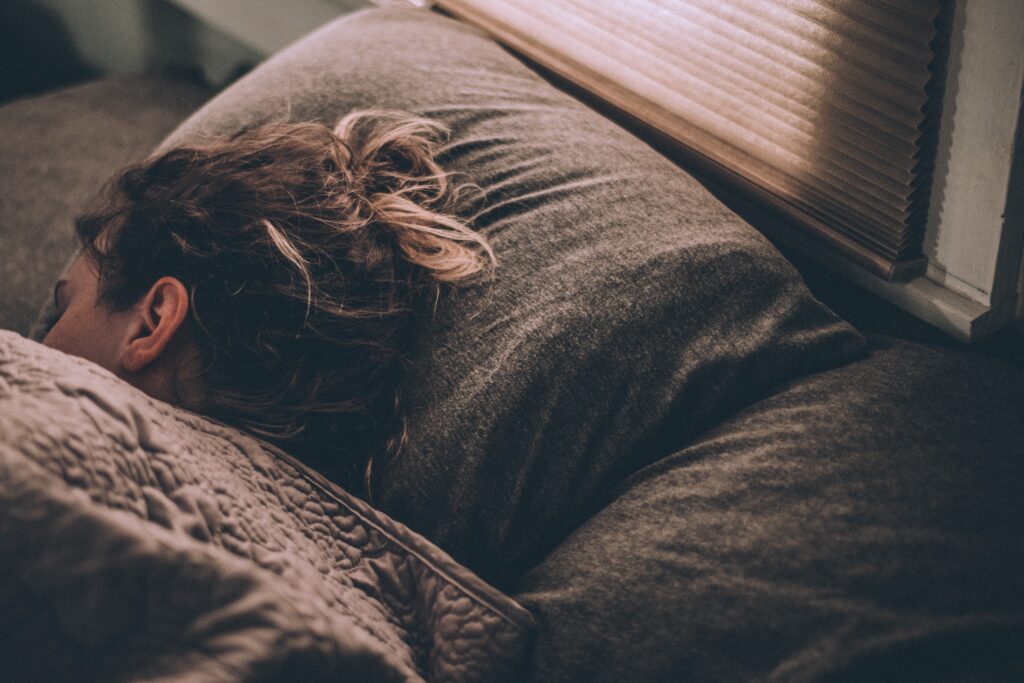Bedtimes can be a difficult event for parents in our situation, but did you know there are common autistic sleeping positions?
Understanding the common sleeping positions your child adopts can provide valuable insight into their comfort and well-being during restful hours.
In the below article, we will explore some of these positions, shedding light on their potential significance.
We’ll also offer tips to promote better sleep for your little ones.
Typical autistic sleeping positions
Whilst this comes with the usual caveat that every child is different, here are some common positions.
Curled up
Many autistic kids find comfort in sleeping while curled up, assuming a fetal position.
This position offers a sense of security and warmth, similar to being swaddled.
It may indicate a need for reassurance or a desire for boundaries.
To facilitate a peaceful night’s sleep, consider providing a weighted blanket or a snug sleep sack that mimics the feeling of being hugged.
This can help create a cozy and secure environment for your child.

The spread eagle
Some autistic children sleep with their limbs spread wide apart, taking up a large amount of space.
This position may indicate a desire for freedom of movement during sleep. Some autistic children can like the feeling of sliding their legs back and forth under the covers.
If your child prefers this position, ensure they have ample space in their bed or consider investing in a larger mattress to accommodate their comfort needs.
The nesting position
An autistic child may create a “nest” of pillows, stuffed animals, or blankets around them while they sleep.
This position is often a way to regulate sensory input, providing a comforting barrier between their body and the environment.
Encourage this behaviour by helping your child arrange their nest before bedtime. Obviously ensure the materials used are safe and do not pose a risk during sleep.
Something like a bed bumper could be helpful for a child with these preferences as they can help them feel enclosed.
The face down method
Sleeping face-down, with the head turned to the side, is another common sleeping position for autistic children.
This posture might be associated with seeking deep pressure input or comfort, as it can provide a sense of grounding.
To promote safety and comfort, use a firm mattress and ensure your child has proper support for their neck and spine.
The rotator
Some autistic children may frequently change sleeping positions throughout the night.
This movement can be attributed to difficulties with self-regulation, sensory issues, or a desire for different types of sensory input.
Understanding and accepting this behaviour can help reduce your child’s anxiety around sleep.
Make sure the bedding is loose and adjustable, allowing them to adapt their sleep environment as needed.
What to try
While observing your child’s preferred sleeping positions can provide valuable insights, it is essential to remember that individual preferences may vary.
Every child is unique, and their needs and comfort levels will differ.
Here are a few general tips to help improve your child’s sleep quality:
Try to establish a consistent bedtime routine that incorporates soothing activities such as reading, listening to calming music, or gentle massages.
Create a peaceful sleep environment by minimising distractions, reducing noise, and ensuring a comfortable temperature.
Depending on your child’s personal preferences, consider a weighted blanket as many parents have had great success with this option. Another option is a sensory compression sheet, again these have proved popular with many autistic children.
Consider using white noise machines or calming music to drown out disruptive sounds that might disturb your child’s sleep.
Promote relaxation before bed with activities such as warm baths or engaging in calming sensory play.
Communicate openly with your child’s healthcare team, therapists, or support groups to explore additional strategies specific to your child’s needs.
What about autism and baby sleeping positions?
Parents will often try to read a lot into their baby and their sleeping positions, looking for links to autism.
Speaking from experience within our group of authors we didn’t see any consistent patterns in terms of positions.
What we did notice however was that possibly due to delayed motor skills, our children who turned out to be autistic didn’t struggle as much in their beds.
As an example our neuro-typical children would try and break free from swaddling, those with autism didn’t.
But remember this is a small sample size with just a handful of reference points.
Summary – Autistic sleeping positions
Remember, you are not alone in this journey, and issues with sleep are common among autistic kids.
Seek support from professionals, connect with other parents who have autistic children, and be patient with yourself and your child as you navigate the challenges of sleep.
By understanding and accommodating your child’s unique sleeping positions and needs, you can create a calming environment.
With the right measures in place you can help them wake up refreshed, ready to face each new day with joy and resilience.


There seems to be a constant desire to attribute everything in life to autism.
Disagree. I don’t think it’s talked about enough.